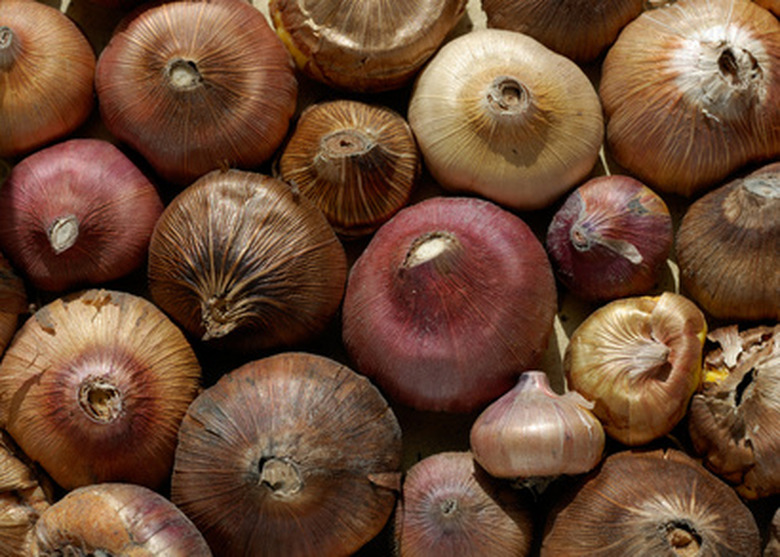How To Plant Gladiolas In Pots
Things Needed
- 12-to-16 inch containers
- Potting soil
- Play sand
- Gladiolas corms
Also known as sword lilies, gladiolas produce large, showy flowers that come in a variety of colors. Suitable for both ground and container planting, gladiolas grow from corms that are similar to bulbs except for the bud that protrudes from the top. If you do not have the space for an outdoor garden, you can plant gladiolas corms directly into pots, which you can display on your patio or terrace throughout the spring and summer.
Step 1
Fill the containers, with a damp mixture of 50 percent potting soil and 50 percent play sand, in the early fall. Fill the container ¾ full with the soil and sand mixture. Make sure that the containers have drainage holes in the bottom.
Step 2
Dig holes in the soil mixture for the gladiolas corms. Dig the holes 6 inches deep and 6 inches apart. Place the corms in the holes with the flat side down, bud side up.
Step 3
Place the containers in a spare refrigerator, basement or root cellar. The storage area should have a constant temperature of approximately 45 degrees. Light is not a necessity during this dormancy period.
Step 4
Bring the pots outdoors in the spring when the gladiolas shoots begin to pop up through the soil. Place the pots in a warm, sunny area.
Step 5
Water the gladiolas by soaking the soil with a watering bucket. Provide enough water that it seeps through the soil and out the drainage holes. Keep the soil moist at all times, watering whenever necessary.
Step 6
Allow the gladiolas to die back in the fall. Wait for the leaves to turn yellow and cut the foliage down the soil line. Dig up the corms and fill the pots with a new batch of potting mix to repeat the dormancy process.
Warning
Do not cut your gladiolas down before they die back and turn yellow. The dying back process is important to the growth of the corm the following year. During the dying back process, the corm gathers energy from the sun, through the leaves. Cutting off the leaves before the process is through may affect the new spring blooming process.
